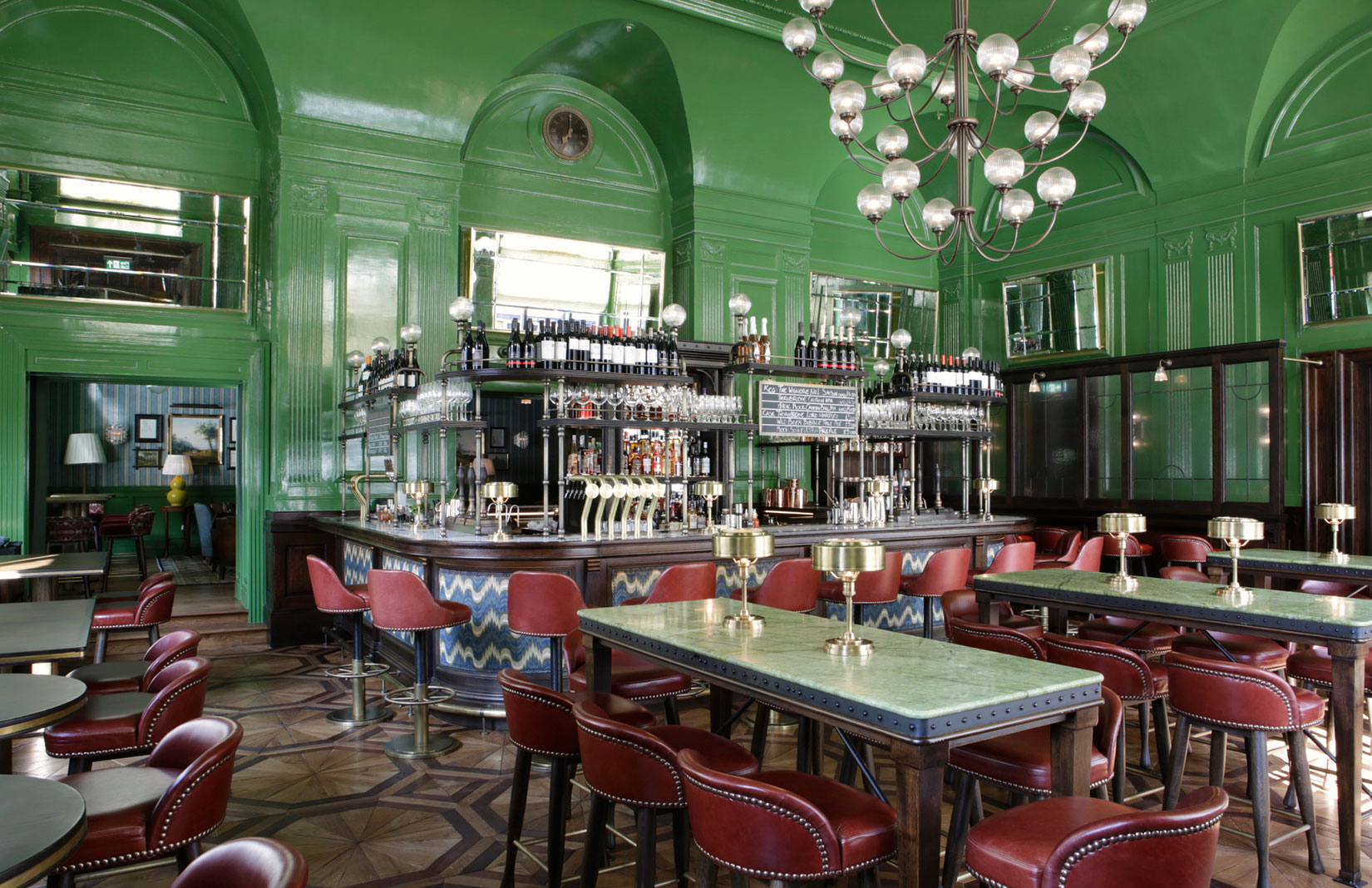
London’s newest pubs are turning to tradition to inform their design, reacting against the sterile industrial trends of recent decades.
From their storied origins as Roman taverns, the capital’s public houses have always formed an essential part of our urban fabric. Whether grandiose Victorian gin palaces, conspiratorial gas-lit refuges, or ubiquitous JD Wetherspoons, they provide the capital’s residents with a communal focal point.
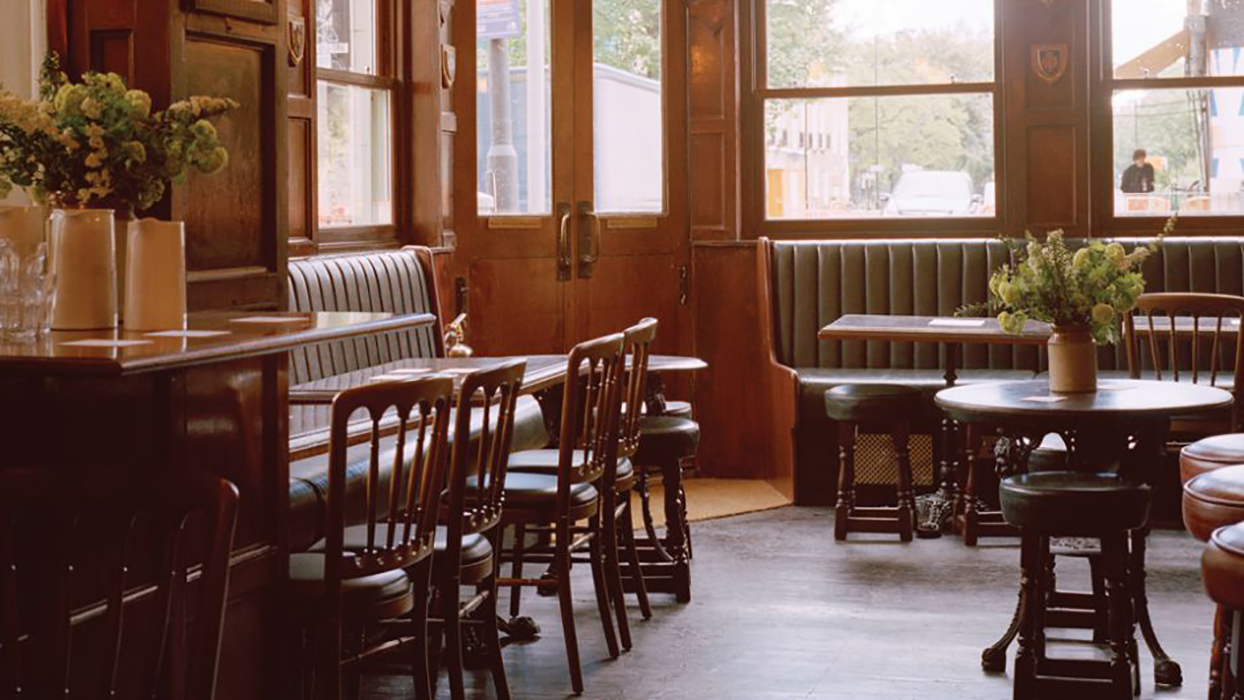
Pubs have also developed a visual language all of their own, with design details including wood-panelling, engraved screens, polished brass fixtures and intricate floor tiling as familiar to Londoners as the drinks on tap behind the bar.
But with rising rents and business rates in the capital, pubs are now under threat. Research by City Hall published earlier this year showed that their numbers have fallen by a quarter since 2001. So how are today’s pub designers trying to buck this trend?
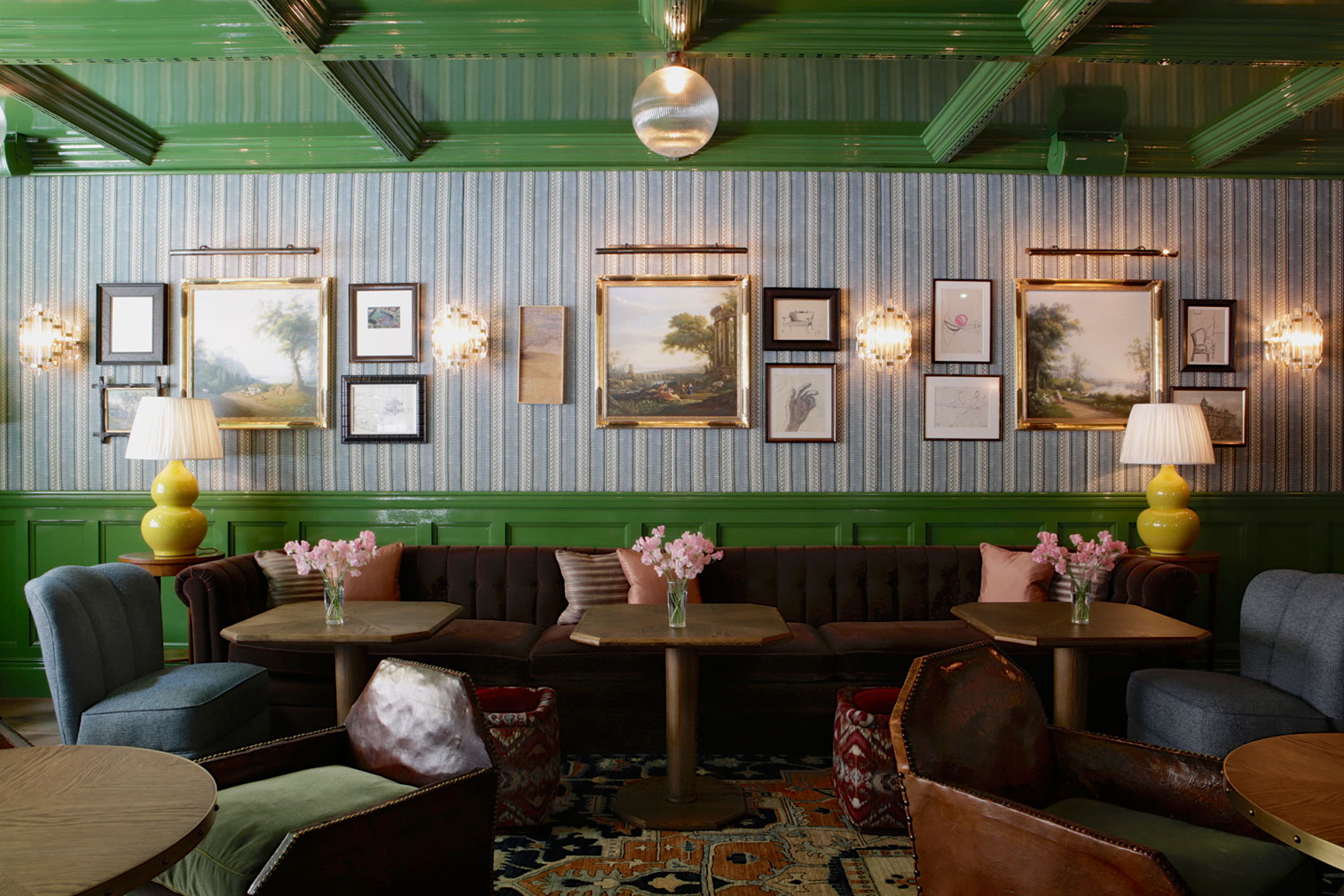
The Wigmore is a new addition to London’s pub scene. Billed as a modern British tavern, it’s set in a cavernous former banking hall in Marylebone and features a menu by celebrity chef Michel Roux Jr. According to its designer Martin Brudnizki – London’s go-to bar and restaurant creator – heritage was a key consideration.
‘We were conscious of ensuring we did not disturb the history but rather highlight it in a contemporary way,’ he says of an ornate pub design that features two snug areas as well as an imposing bar. ‘We chose a high-gloss lawnmower green paint to draw attention to the beautiful cornicing detailing as well as bring a bold splash of colour to the pub.’
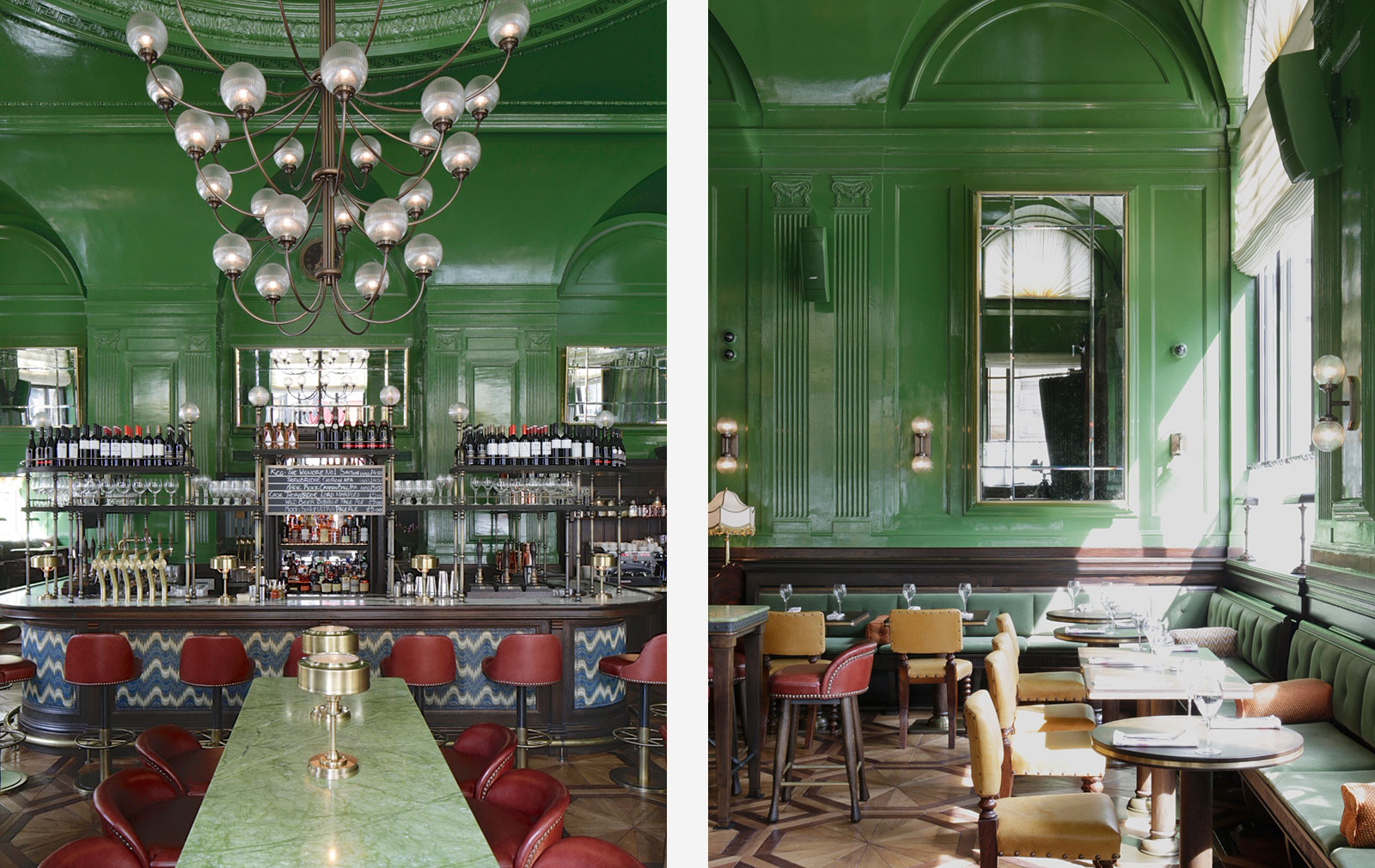
Brudnizki sees this growing urge to celebrate the British boozer’s history as a kickback to the cold industrial designs of the past decade.
‘The idea of creating a cosy and local atmosphere is something we were very aware of,’ he says. ‘Pubs lost this warm and friendly feeling during the noughties but this is such an important aspect that needed to be reintroduced. Designers are now trying to reinvigorate the charm of old pubs through the introduction of beautiful materials such as velvet, leather and patterned upholstery.’
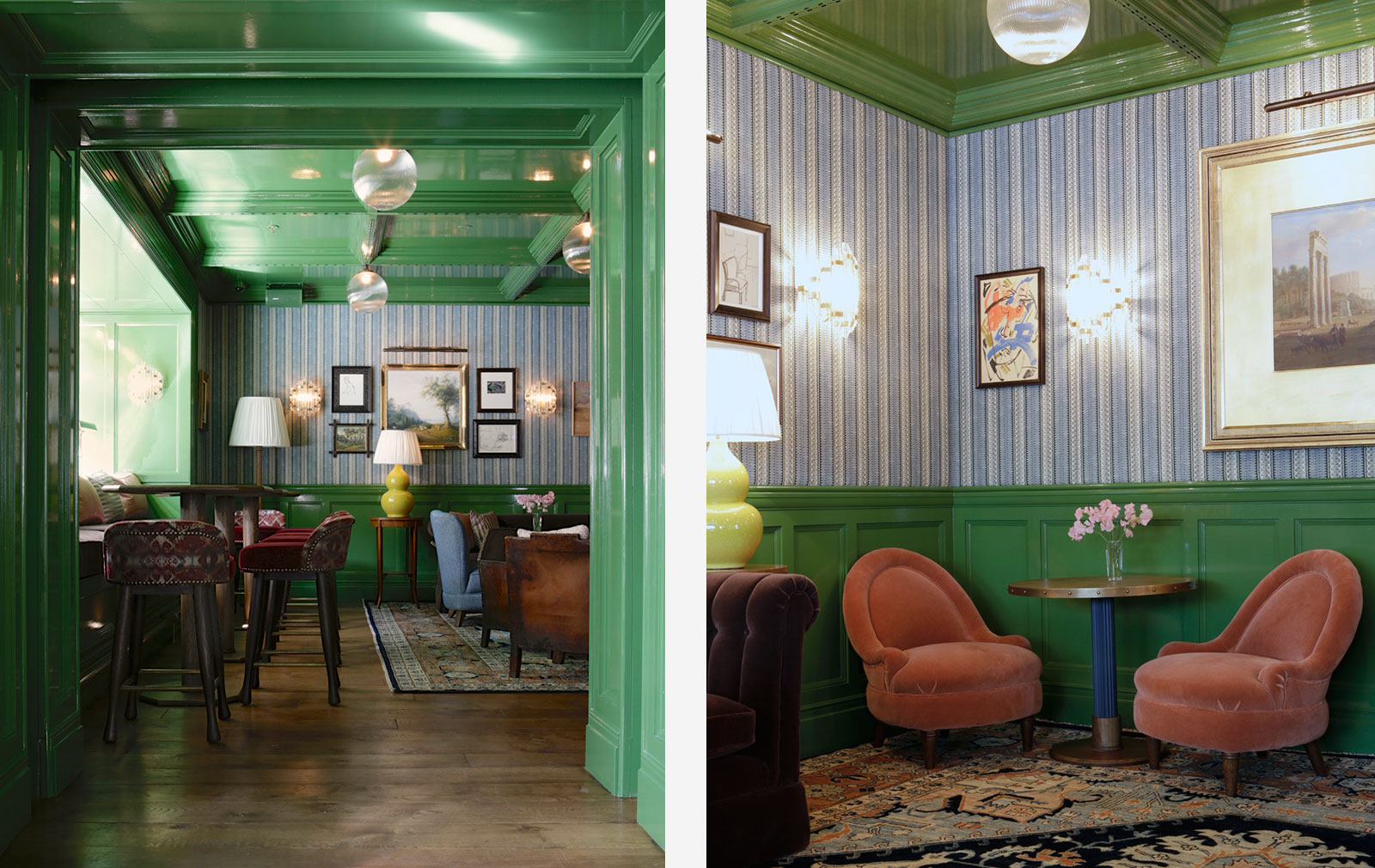
Although the Wigmore is undoubtedly a luxe take on the tavern – part of the adjacent five-star Langham hotel – its nod to heritage reflects a movement happening across London, with pared-back pub renovations characterised by a lack of ostentation becoming increasingly popular.
The Grade II-listed Scottish Stores in Kings Cross was an insalubrious former hangout for soldiers, prostitutes and travelling businessmen dating back to 1901. Yet a change of owners and renovation in 2015 – which restored architects Wylson and Long’s original wood-panelled interiors, as well as signage and tiled details – landed it top prize at Camra’s 2016 Pub Design Awards.

‘Good design is timeless,’ says Sean Murphy, chairman of the awards, who references ‘human scale’ drinking areas, decoration and function as key factors in determining the awards. ‘There was a time when gimmicky themed pubs were replacing old-fashioned bars – such as Victoriana-filled pseudo Victorian gin palaces during the 1980s, or “Oirish” plastic paddy pubs of the 1990s,’ says Murphy. ‘Thankfully enough owners and designers stood by traditional quality design to ensure that not all pubs were altered although at times it seemed as though all was lost.’
Of course it’s far more than design alone that is shaping the pubs of today. The past decade’s craft beer renaissance and the return to favour of gin have means drinks menus have renewed importance, while the advent of pop-up restaurants has placed some of the capital’s most exciting food entrepreneurs into the kitchens of the capital’s pubs.
We’ll drink to that.
Read next: 7 of the best London rooftop bars

















